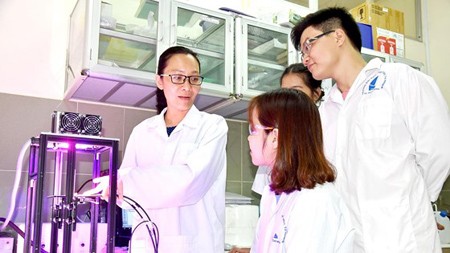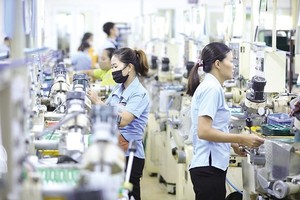
Dye-sensitized solar cells (DSSC) is the third generation cells, preceded by silicon solar cells and thin-film solar cells. This new kind is easy to produce and quite cheap while having a high performance of over 40 percent even on cloudy days. It is exceptionally suitable to operate inside houses.
The project of Dr. Nguyen Tuyet Phuong and her partners, from the Chemistry Department of the University of Science – Vietnam National University HCMC, focuses on the two main features of durability and performance of DSSC. This is supposed to help manufacturers to create colorful cells that are able to bend effortlessly, making them an ideal material for windows of skyscrapers thanks to their aesthetic quality and usefulness.
Discussing the research in depth, Dr. Phuong shared that her studying period in Denmark greatly helped her deeply understand the core of each matter in a solar cell. From this invaluable knowledge, she was able to further develop and optimize electrolytic dissociation, combining with new additives, to increase the cell durability from 60 percent to 90 percent. This research also results in cheaper cells that are environmentally friendly.
To boost the cell performance, Dr. Phuong used a new denaturing method on the electrode surface of the cell, indirectly identifying factors to decrease the efficiency of a solar cell and selecting the most suitable way to denature its surface.
Unfortunately, these positive basic research results of Dr. Phuong encounter various obstacles when being implemented in reality due to a lack of cooperation among related organizations.
In addition, the technological market in Vietnam is still too young, leading to insufficient fostering policies as well as connections between domestic scientists and technological businesses. This has limited the commercialization ability of a new scientific product in the country while those businesses have to seek similar yet more expensive products abroad.
However, Dr. Phuong confided that she was totally satisfied with what she has done, being the person to open new doors for research on solar energy in Vietnam. All are now in the hand of potential students to further develop her results and turn them into truly practical material in the future.
























